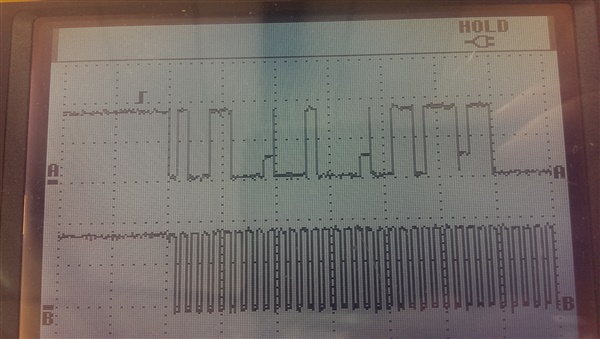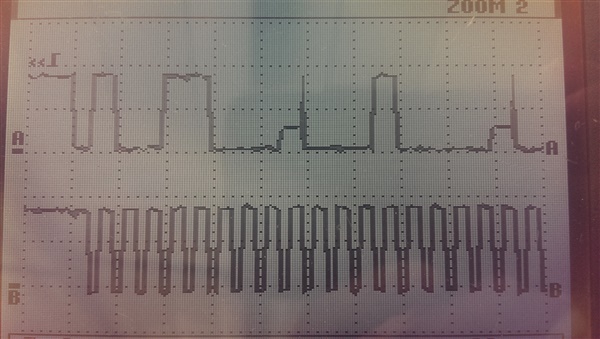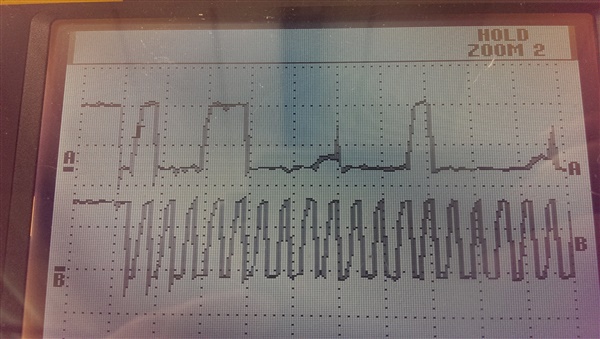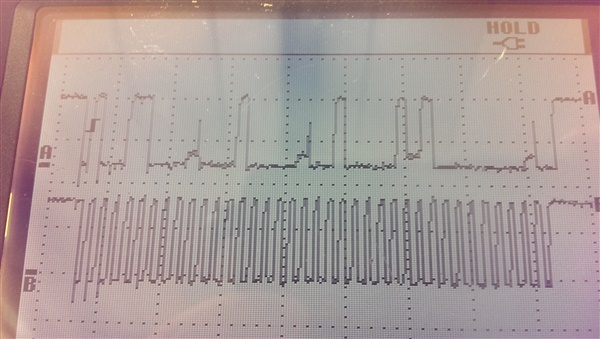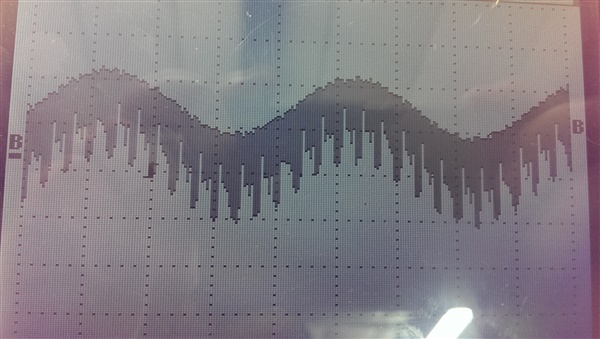Hi all,
I am trying to interface a DAC6573 EVM with an MPU via I2C. The EVM is being used in default settings. I have used i2cdetect to confirm that the device is found and its address listed as 0x4C. The data sheet says the address should be 0x98, so it is clear that the address is being shifted to a 7 bit address.
I believe that the command signal should be 0x10 in order to update DAC A with the data. I am trying to send a digital signals to the device but I am not receiving any output.
Below is an image of the SDA and SCL lines from the MPU. The data seems to be out putting 0x98 as the address, 0x10 as the command, then the MSB and LSB data. The only issue I see with the data is that the acknowledge bit seems to come in between the rails. Otherwise, the data seems to be correct.
A is the SDA and B is the SCL for reference.
A more zoomed in image.
So I am unsure if there is an error with the i2c interface or where exactly the error could be.
Thank you for your time and consideration.
-Kyle



